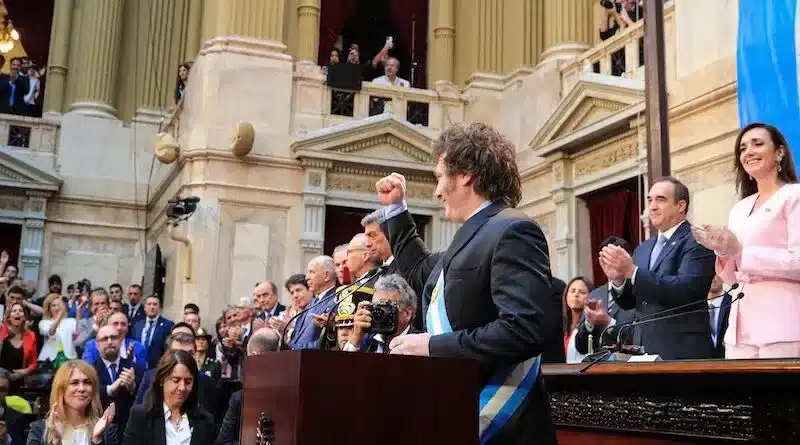
For optimists, the stabilisation plan is bearing fruit after an initial stage of great sacrifices for the population. The stability achieved and a government committed to fiscal balance and a pro-market and pro-investment agenda, added to the possibilities of large investment projects in strategic sectors, put Argentina on the verge of an economic take-off. For the sceptics, the apparently good progress of the economy is a mirage prior to a new devaluation and crisis that will repeat the failures of previous plans.
Optimists see this peso appreciation as a sign of success, reflecting an improvement in productivity and an export boom (present and future) in energy, mining and renewables. Sceptics warn that stability is a mirage driven by the carry trade, a financial operation in which investors convert US dollars into pesos to take advantage of very high yields in dollars (currently 19% per annum) for short-term placements in local currency. This unsustainable policy keeps the exchange-rate artificially appreciated, increases international reserves and lowers country risk, generating a false sensation that things are going well.
How do we identify whether Argentina is on a collision course or on the way to the promised land? The agreement with the IMF is key to transforming the current scheme into an orderly transition towards a sustainable model. If closed, it would inject international reserves that Argentina badly needs, would allow lower interest rates without capital flight and would consolidate exchange rate stability without relying on the carry trade.
Argentina has already made a fiscal adjustment of 5% of GDP to balance its accounts, cleaned up the BCRA’s balance sheet, implemented a successful capital amnesty programme, and put in place an investment incentive regime and a reform agenda. With IMF support, the country could return to the international capital markets, gradually lift the currency controls and lift the remaining obstacles to attract strong investments in strategic sectors. This would open the door to a period of stability and sustained growth.
But the spectre of the exchange rate overvaluation and the reliance on short-term speculative capital resulting from the carry trade, feed the doubts of the critics, who maintain that the plan is unsustainable.
March 10, 2025
SOURCE: EURASIA REVIEW
The Milei Plan: Collision Course Or On To The Promised Land? – Analysis
